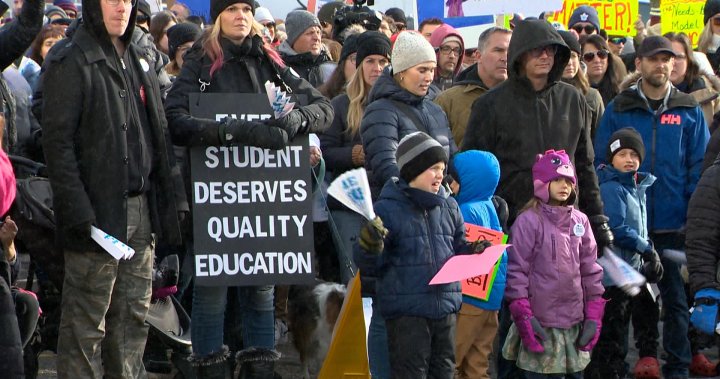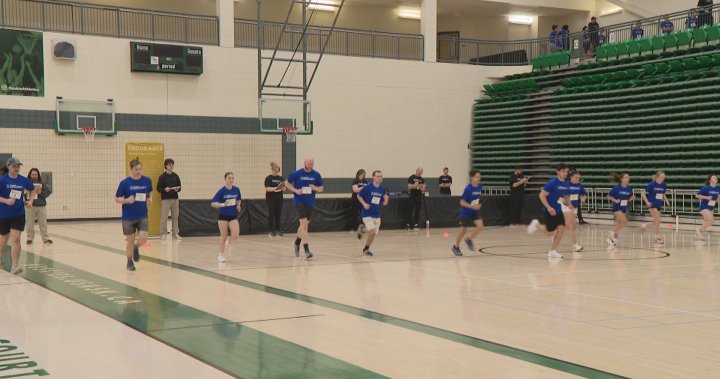The Saskatchewan Teachers’ Federation (STF) announced another one-day strike for teachers across the province to take place on Monday.
On Jan. 16, teachers in Saskatchewan went on their first strike of the year in more than 40 locations across the province, citing classroom size and complexity as the main issues they want discussed, among others.
Education minister Jeremy Cockrill said issues around class sizes are best dealt with by local school divisions as each division is likely to have respective issues. He said what the teachers are asking for is taking that decision away from school divisions.
To talk about the ongoing labour negotiations between STF and the provincial government, Global News sat down with Charles Smith, an associate professor in political studies at the University of Saskatchewan.
Q: The teachers say class size and complexity are the biggest issues that they want to see addressed, but the government says they won’t budge. How do you see either side bridging that gap?
Get the latest National news.
Sent to your email, every day.
A: “We know that other jurisdictions, including Ontario, Quebec, British Columbia, have all negotiated classroom size and complexity into their collective agreements. We know that Saskatchewan has seen an unprecedented population boom over the last decade. In fact, the government’s been very proud of that fact.
“The implications of population growth mean that things like classrooms are getting larger, and it’s becoming more and more difficult for teachers to do the job they’re empowered to do. All of that lends itself to questions about how as a society we mandate or govern classroom sizes if we want students to excel in public education.
“I think teachers are an important and in fact, a vital resource to say, ‘Listen, it’s not working. These class sizes are too large and we have to do something about it.’ Putting that language in the collective agreement, I think, makes a lot of sense given what’s happened in other jurisdictions.”
Q: The education minister has said that classroom size and complexity are best managed by local school boards. Do you agree with this, or is this something that should be included in the teachers’ bargaining agreement?
A: “Giving the responsibility to school boards when they don’t have the capacity institutionally to raise resources or to address this issue feels like passing the buck because really, the boards don’t have that power. It really does begin and end with the government. It just doesn’t seem like the reality meets the rhetoric.
Q: Teachers have once again called for another one-day strike. Do you feel like this is an effective job action? And if not, where would they go from here?
A: “I think it’s really hard to measure the impact of one-day actions that are several days apart. I think what teachers are trying to do is to raise awareness without walking out of the job and having children not in school. They’re trying to manage that in a way that keeps the public on board but also raises the issues that they’re trying to raise at the bargaining table. It’s an interesting strategy and one that will certainly be watched closely.
“Other teachers’ unions in the past have simply taken their legal mandate and (gone on strike). We saw that in B.C. several times, and we witnessed that with some of the teachers’ unions in Quebec most recently. It’ll be interesting to gauge those two strategies. I think both have legitimacy and both raise awareness. The question will be, will this affect the government to move back the table with these two issues? I think we can predict that more and more job action will continue until we start seeing some movement.”
© 2024 Global News, a division of Corus Entertainment Inc.




